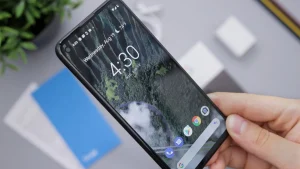Introduction to Android Settings and Battery Efficiency
Are you tired of your Android device dying on you when you need it the most? You’re not alone. Many users struggle with battery life, especially as smartphones become more powerful and packed with features. Thankfully, there are simple tweaks that can significantly boost your battery efficiency without sacrificing performance.
In this post, we’ll explore seven essential Android settings that can help extend your phone’s lifespan between charges. Whether you’re a casual user or a tech enthusiast, these tips will empower you to get the most out of your device’s battery life while keeping it running smoothly. Let’s dive in and unlock the full potential of your Android experience!
Battery Saving Mode: What it is and How to Use It
Battery Saving Mode is a game-changer for Android users. It helps extend your phone’s battery life by limiting certain features and background processes.
When activated, this mode reduces the performance of apps and slows down resource-intensive tasks. This means less power consumption when you need it most.
To enable Battery Saving Mode, go to Settings. Look for “Battery,” then find the option labeled “Battery Saver” or similar. With one tap, you’re on your way to prolonging that precious battery life.
You can customize how aggressive this mode operates based on your preferences. Some devices offer options like turning off location services and reducing screen brightness automatically.
Using Battery Saving Mode wisely can keep you connected longer without constantly searching for an outlet.
Adjusting Screen Brightness and Timeout
Screen brightness plays a significant role in battery consumption. A bright display can drain your battery faster than you might realize.
Consider lowering the brightness level to extend usage throughout the day. Many Android devices offer an adaptive brightness feature, adjusting automatically based on ambient light conditions. This not only saves energy but also enhances visibility in varying environments.
Timeout settings are just as important. The longer your screen stays active without interaction, the more power it uses. Shortening the screen timeout to 30 seconds or even one minute can make a noticeable difference.
Remember, every little adjustment counts when it comes to maximizing battery life. Take a moment to explore these options and find what works best for you and your device’s needs.
Managing App Permissions
Managing app permissions is a crucial step in optimizing battery life. Many apps request access to features like location, camera, or contacts—permissions that may not always be necessary for their primary function.
Take a moment to review your installed apps. Go into the settings and check what each app can access. If an app doesn’t need constant GPS tracking or background data usage, consider revoking those permissions.
Limiting permissions reduces background activity, which in turn conserves battery power. Focus on keeping only essential permissions active.
This simple adjustment makes a significant difference over time without sacrificing functionality. Your phone will thank you with longer-lasting battery life as it processes fewer requests from various applications throughout the day.
Turning Off Background Data for Non-Essential Apps
Many apps run in the background, consuming data and battery life without you even noticing. These non-essential apps often sync updates or send notifications when you’re not actively using them.
By turning off background data for these applications, you can free up resources. This simple change helps your device conserve energy while extending battery life throughout the day.
To adjust this setting, head to your device’s settings menu. From there, select “Apps” or “Applications.” Choose any app that doesn’t require constant connectivity and look for the option labeled “Background Data.” Toggle it off to limit its activity.
You’ll notice a difference over time as your phone conserves power and manages performance better. It’s an easy way to gain more control over how your device uses energy. With just a few taps, you’re on your way to improved efficiency!
Utilizing Adaptive Battery and Power Management Features
Adaptive Battery is a game-changer for Android users. This innovative feature learns your app usage habits over time, prioritizing power for frequently used apps while limiting resources for those you seldom touch.
By default, it’s often turned on. However, you can double-check in the battery settings to ensure it’s active.
Power management features are just as crucial. You’ll find options such as “Battery Saver” and “Extreme Battery Saver.” These settings help extend your device’s life when it starts running low.
Switching on these modes can limit background activity and reduce performance slightly, but they significantly enhance overall battery longevity.
Explore other advanced settings like “Scheduled Power On/Off.” This allows your phone to conserve energy during inactive hours by shutting down automatically at night or turning back on before you wake up.
Together, these tools create an efficient ecosystem that keeps your device charged longer without constant charging interruptions.
Conclusion: Additional Tips for Maximizing Battery Life on Android Devices
To further enhance the longevity of your Android device’s battery, consider a few more strategies. First, keep your software updated. Manufacturers often release updates that include optimizations for power management.
Next, be mindful of how many apps you have installed. Unused applications can drain resources in the background. Regularly review and uninstall any apps you no longer need.
Consider using dark mode if your phone has an OLED display. This feature helps save battery by turning off pixels in darker areas of the screen.
Limit location services to only when needed. Constant GPS tracking can significantly impact battery life.
By implementing these adjustments along with those discussed earlier, you’re on your way to enjoying a more efficient battery experience on your Android device. These small changes can lead to remarkable improvements over time.
